MP Board Solutions for Class 10 Geography Chapter 6 – Manufacturing Industries
MP Board Solutions for Class 10 Geography Chapter 6 – Manufacturing Industries are essential for understanding industrial development and its impact in the MPBSE curriculum. These well-structured answers help students grasp topics like the importance of industries, types of industries, their spatial distribution, and effects on the environment. Designed as per the latest syllabus, these solutions strengthen conceptual clarity and improve exam preparation. Ideal for revision and practice, they promote economic understanding and real-world application, making them a valuable study tool for scoring well in Class 10 Social Science exams.
MP Board Solutions For Class 10 Geography – Manufacturing Industries – Exercise Images
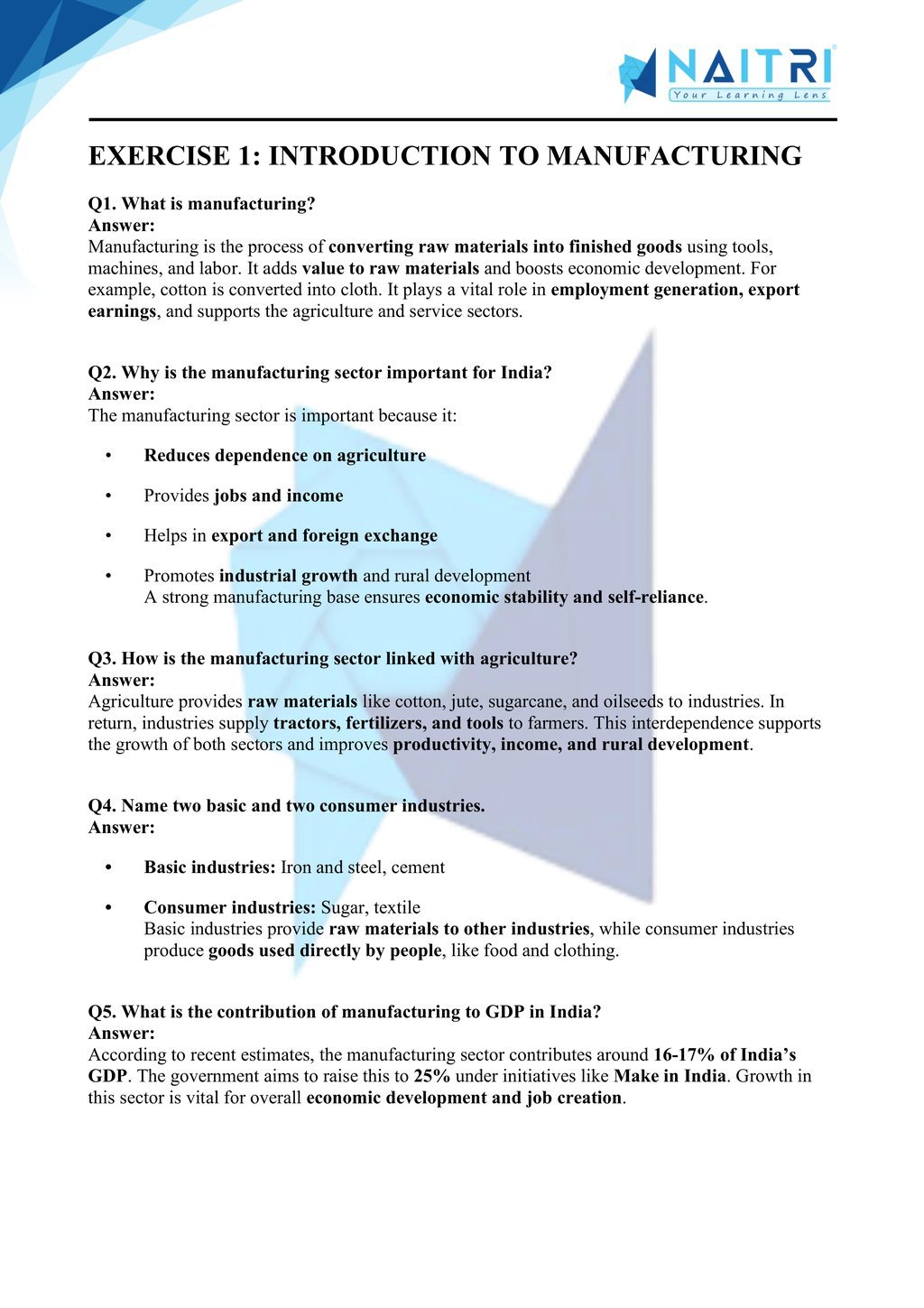
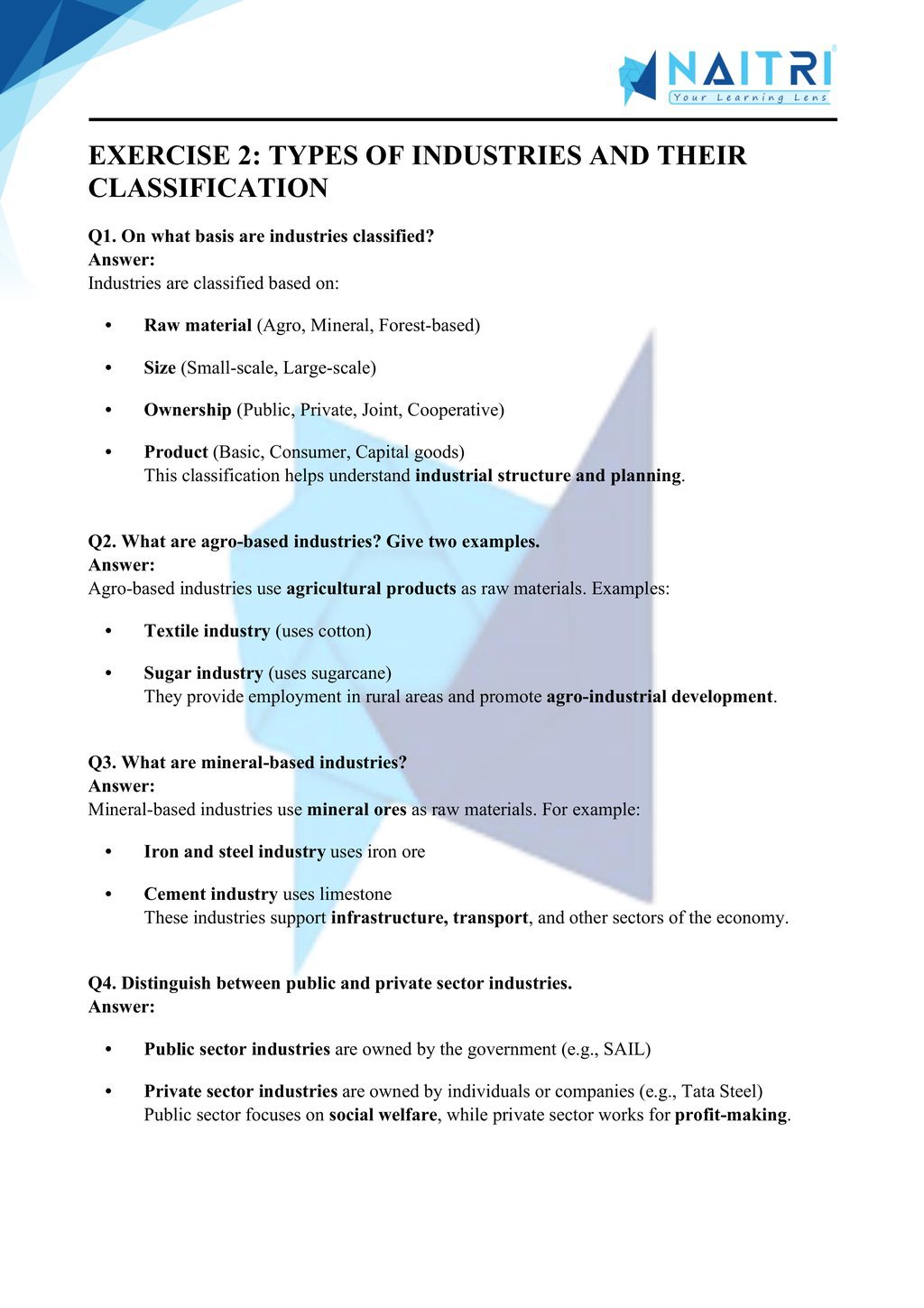
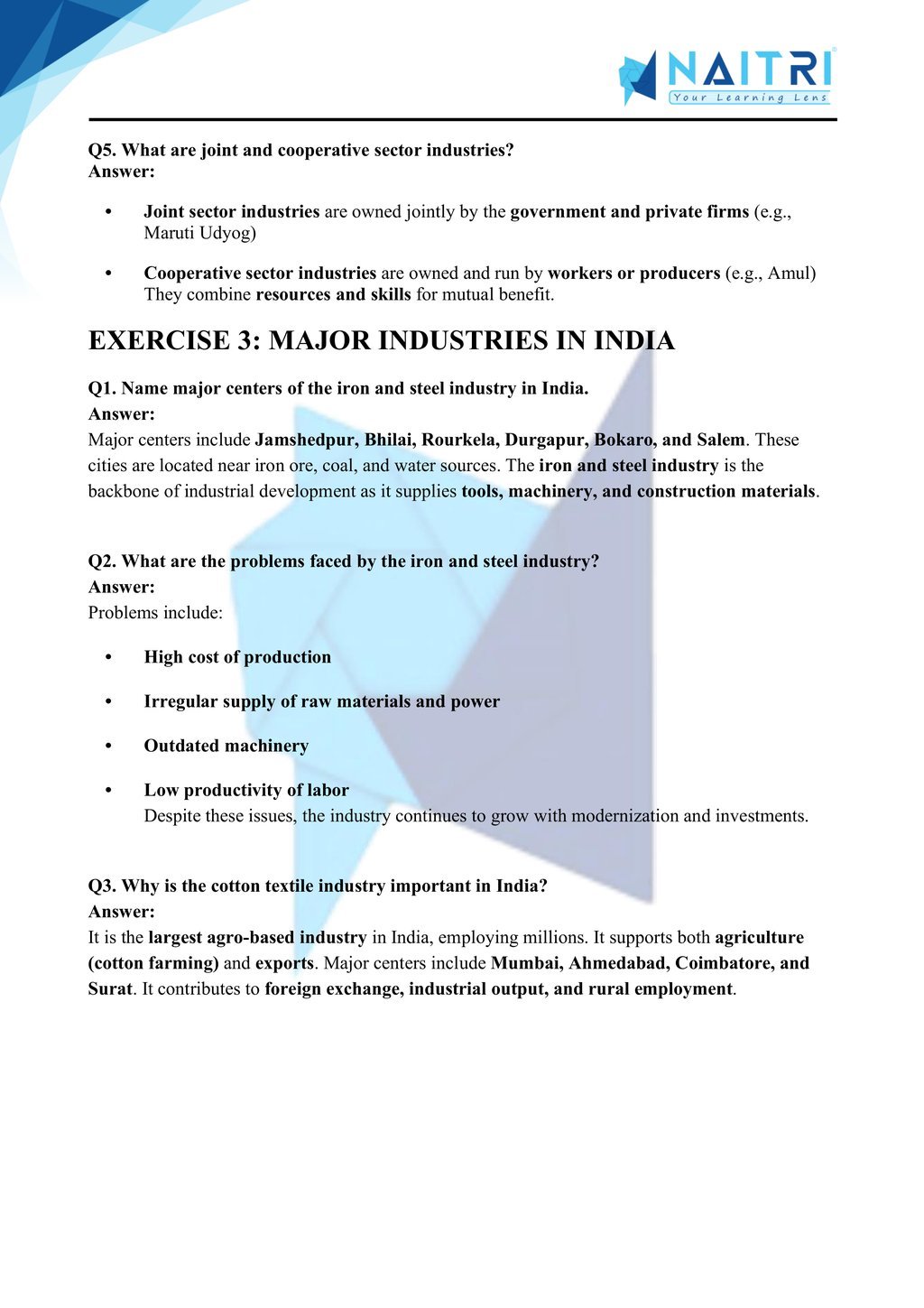
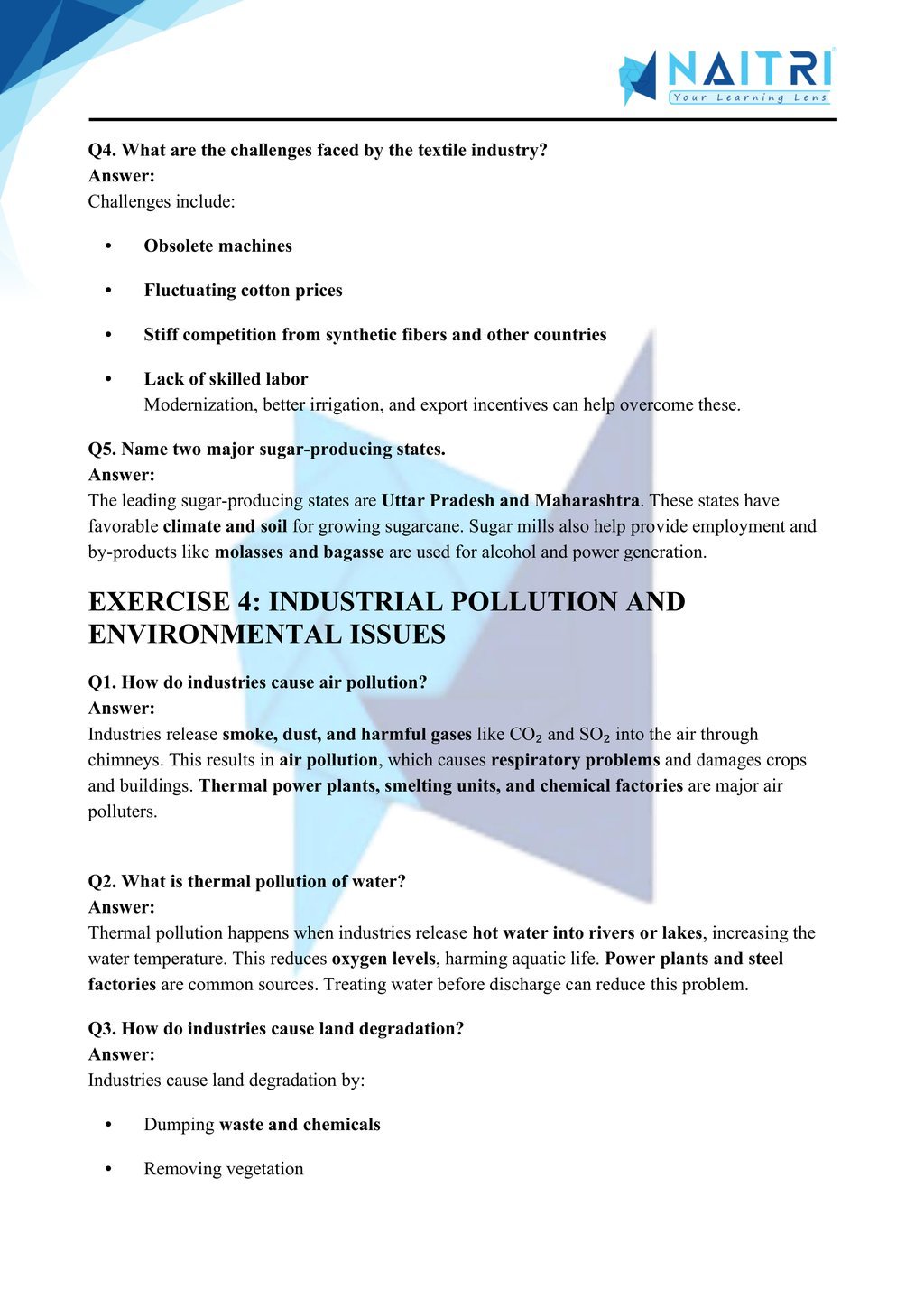
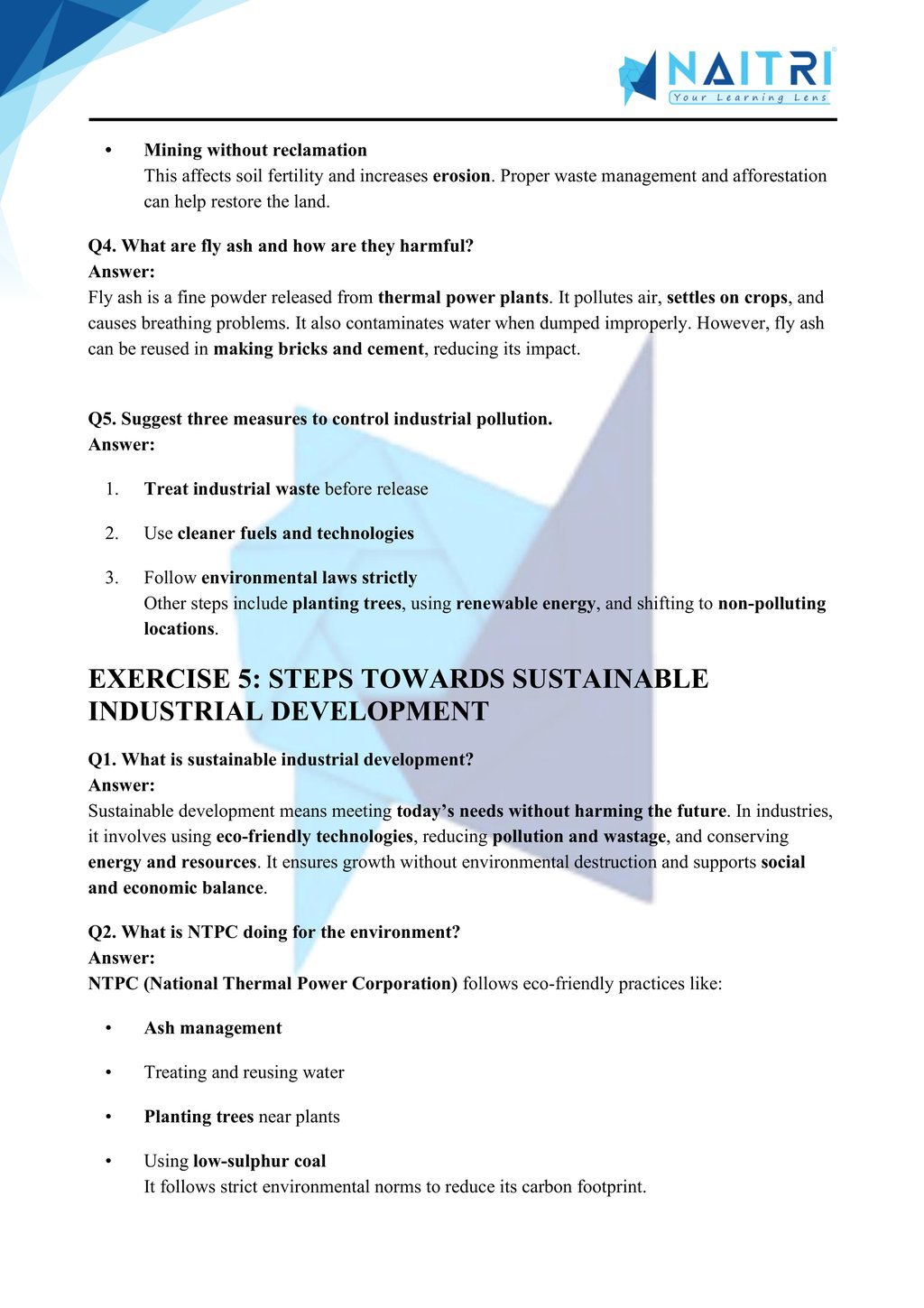
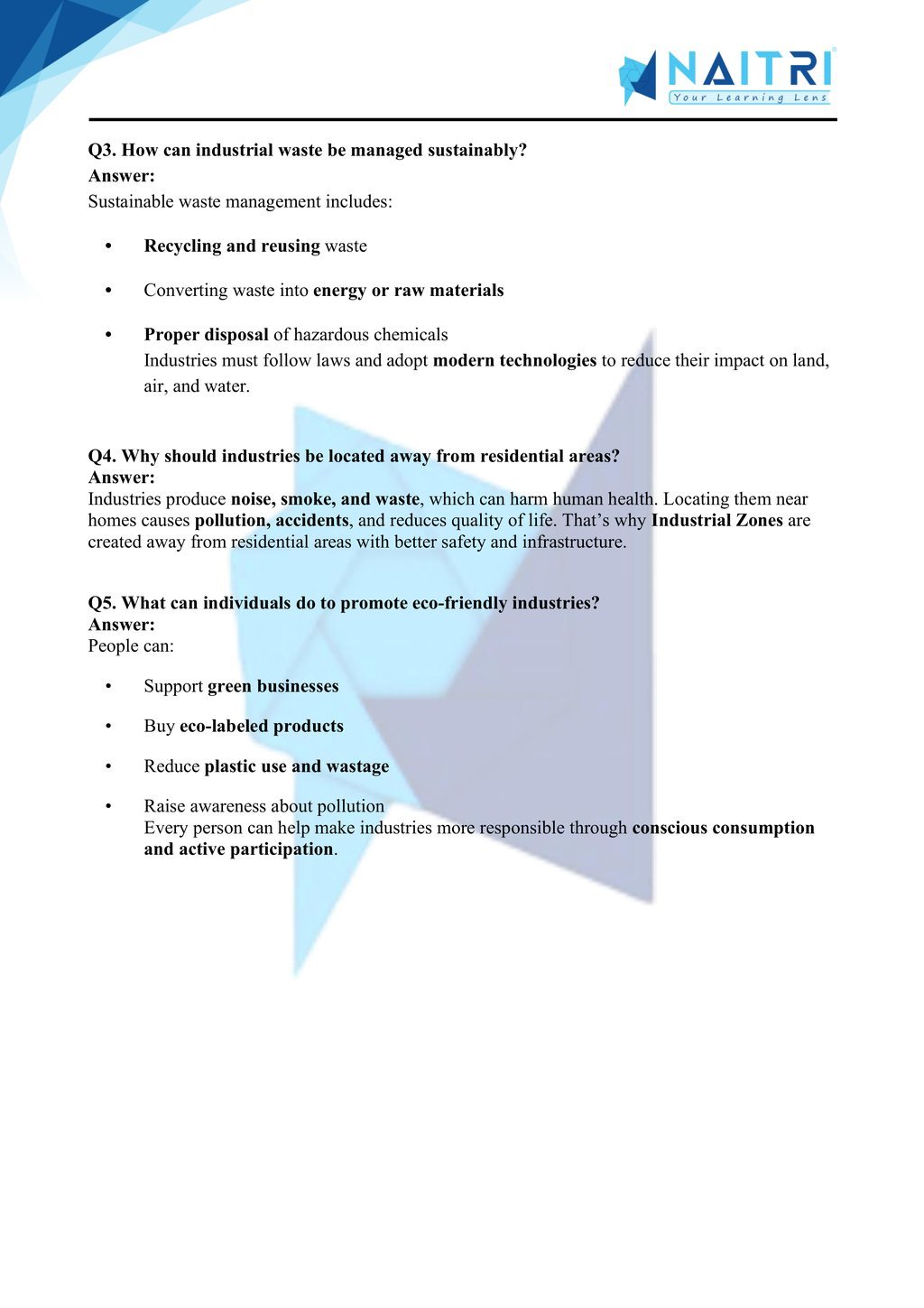
Experience Geography Like Never Before – With AR!
Understanding Manufacturing Industries is now more exciting and immersive! With the NAITRI App, you can explore complex geography concepts through Augmented Reality (AR). Explore factories function, raw materials transform, and industrial zones expand — right in front of you. Our AR-powered lessons make learning interactive, 3D, and fun, helping you retain concepts better and enjoy every topic.



Visualize . Interact . Understand . The future of learning is here
Manufacturing Industries – Important Questions with Answers
1. What is manufacturing?
Answer: Manufacturing is the process of producing goods in large quantities using raw materials and machines, usually in factories, to add value to natural resources.
2. Why is manufacturing important for India?
Answer: Manufacturing promotes economic growth, employment, reduces dependence on imports, supports agriculture, and enhances national income and self-reliance.
3. What is the contribution of manufacturing to the Indian economy?
Answer: Manufacturing contributes about 16% to India’s GDP, plays a key role in exports, and drives development through industrialization and infrastructure growth.
4. How does manufacturing help in modernizing agriculture?
Answer: Manufacturing provides tools, fertilizers, machines, and irrigation equipment, which improve productivity and efficiency in the agricultural sector.
5. What are agro-based industries? Give examples.
Answer: Agro-based industries use agricultural products as raw materials. Examples include textiles (cotton), sugar, paper, and vegetable oil industries.
6. What are mineral-based industries?
Answer: These industries use minerals and metals as raw materials. Examples include iron and steel, cement, aluminium, and petrochemical industries.
7. What is the role of the textile industry in India?
Answer: It is the largest industry in terms of employment after agriculture, contributes to exports, foreign exchange, and has a rich traditional base.
8. Which factors influence the location of industries?
Answer: Key factors include raw materials, power supply, water, labour, transport, capital, and market availability, all affecting industrial success.
9. Name the major industrial regions of India.
Answer:
Mumbai-Pune Region
Hugli Region
Bangalore-Tamil Nadu Region
Gujarat Region
Chotanagpur Plateau Region
10. What are small-scale industries?
Answer: These industries are labour-intensive, use limited capital and resources, and often work at a local level, like handicrafts, weaving, and food processing.
11. What are the problems faced by cotton textile industry?
Answer: Problems include power shortage, obsolete machines, low productivity, stiff global competition, and fluctuations in raw cotton availability.
12. Name two centres each for cotton and woollen textiles.
Answer:
Cotton: Mumbai, Ahmedabad
Woollen: Ludhiana, Srinagar
13. What is the importance of the iron and steel industry?
Answer: It is the basic industry providing raw materials for machinery, construction, defence, and other industries, forming the backbone of industrial development.
14. Name two major steel plants in India.
Answer:
Bhilai Steel Plant (Chhattisgarh)
Tata Steel Plant (Jamshedpur, Jharkhand)
15. What are the challenges faced by iron and steel industry?
Answer: Key challenges include high cost of inputs, outdated technology, low labour productivity, and limited access to high-grade ore and coking coal.
16. What is the significance of the chemical industry?
Answer: The chemical industry produces fertilizers, acids, plastics, synthetic fibres, and supports agriculture, pharmaceuticals, textiles, and other industries.
17. What are the types of chemical industries?
Answer:
Heavy chemicals: sulphuric acid, nitric acid
Light chemicals: cosmetics, plastics, paints, soaps
18. Why is the cement industry important?
Answer: Cement is essential for construction of buildings, bridges, roads, dams, and is a major indicator of a country’s infrastructure development.
19. Name any two major cement producing states in India.
Answer: Madhya Pradesh and Andhra Pradesh are major cement producers due to availability of limestone, the key raw material.
20. What is the IT industry and where is it concentrated?
Answer: IT industry involves software development, services, and BPOs. It is concentrated in Bangalore, Hyderabad, Pune, Chennai, and Gurugram.
21. What are the environmental problems caused by industries?
Answer: Industries cause air, water, and land pollution, leading to health issues, deforestation, habitat loss, and contribute to global warming.
22. How do industries contribute to water pollution?
Answer: Industries discharge toxic chemicals, oils, dyes, and heavy metals into water bodies, harming aquatic life and contaminating drinking water sources.
23. How can we reduce industrial pollution?
Answer: By using clean technologies, treating waste, recycling, proper disposal of chemicals, and following environmental regulations and monitoring systems.
24. What is NTPC and what does it do?
Answer: National Thermal Power Corporation (NTPC) is India’s largest power company, promoting energy efficiency, and committed to environmental protection in power generation.
25. Suggest two measures to promote sustainable industrial development.
Answer:
Encourage eco-friendly and energy-efficient technologies
Strict enforcement of environmental laws and corporate responsibility
Manufacturing Industries focuses on the role of industrial development in economic growth. Students explore different types of industries—based on raw materials, size, and ownership—and their distribution in India. The chapter discusses the impact of industries on the environment and promotes concepts like pollution control, energy efficiency, and sustainable industrialization for balanced national progress.
Download Naitri App
Easy, Visual Learning — Right on Your Phone
Learn with Augmented Reality! The Naitri app makes CBSE and MP Board concepts interactive and fun — even in low-resource settings. Watch lessons, complete homework, take tests, and track progress — all in one place. Anytime. Anywhere.
Available on








